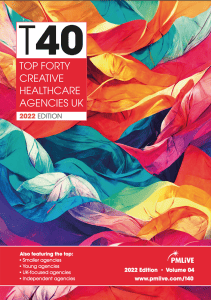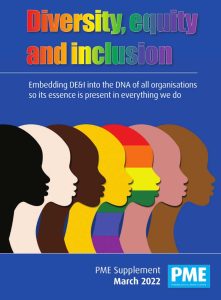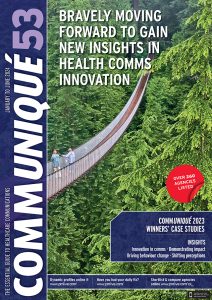A patient view on the ABPI’s patient collaboration sourcebook
July 25, 2019 | ABPI, Patient-centric, patient, patient advocate, patient collaboration, sourcebook
Last month, the ABPI released a much-in-demand document: The Working with Patients and Patient Organisations sourcebook.
Last month, the ABPI released a much-in-demand document: The Working with Patients and Patient Organisations sourcebook. It is a soothing balm for those organisations in 2019, who whether through accident or fear, remain patient-shy. It sets out a thorough and accessible foundation for collaborations between patient advocates and pharmaceutical organisations.
A balm, and perhaps a nail in the coffin for organisations who refuse to work with patients. But then I would say that; I’m a patient. The common culprits cited against collaboration are dispatched with ease: ‘we don’t have the know-how to interact with patients’, ‘the ABPI code isn’t clear on what’s allowed’, ‘we don’t know how to define patient collaboration’.
A sympathetic ally
On these points the sourcebook is a strong ally, the latter in particular. It’s most helpful at detailing the types of patient interaction, types of patients drawn to those interactions and why such interactions are valuable.
From a patient perspective it’s also reassuring. For those new to advocacy work or industry involvement, it’s an invaluable blueprint on what to expect from a project. When it comes to practical concerns like travel reimbursement and accommodating carers this is crucial. If at any time the reality falls short of expectations, there is now a guide spelled out by a respected and influential industry voice that can serve as a back-up.
The sourcebook is broken down into five areas: principles and agreements, definitions, events and meetings, research and development, product launches and payment. At times, it is impressively astute. In ‘definitions’, it’s quick to remind that when identifying or labelling patient collaborators, assumptions must be avoided. How and why people want to be known is important. Case in point, I have spoken at industry events several times. Despite any relevant skills and motivations for being at that event, I have almost always been introduced as a patient before anything else, and usually without being asked. I don’t mind the patient moniker, I’ve had a lifetime to get used to it! But, like many, I object to being seen as ‘only’ or ‘just’ a patient. The term ‘patient’ is so heavy and full of connotation, it’s hard for even the most self-assured person not to get lost under it.
The experiential vs academic breakdown of patient knowledge (pg 10) is a highlight. While other organisations have classified patients working in industry, the depth here is unusual. This categorisation can be used to inform the nature, responsibilities and subsequently, any compensation, of a patient’s role across many different project types.
One point on compensation; this section could go further. The surrender of personal, in-demand data, should always be compensated. That remains true in every context, but in health the stakes are higher. There are reasons why some people choose not to accept compensation, but that should never pre-empt the decision not to offer. Staying empowered as a patient is key, sometimes that’s achieved through patient education or respecting personal preferences, sometimes it’s about feeling our experience and time is valued too.
Advisory boards (ABs) are also given some much needed scrutiny. It’s encouraging that ABs are becoming commonplace, but they are at risk of looking like a tick-box exercise and should never be seen as a guaranteed path to meaningful patient engagement. But if pharma and agencies use the checklist on when and why to employ them (pg 14), they can take a moment to consider when advisory boards will yield the most insight.
Blurred lines
A near-universal ambition of the patient advocate is a simple one; a seat at the table. When I’ve been invited to that all-important table, it is sometimes as a professional with whatever strictures and expectations that brings. Other times it’s to share my perspective as a patient. I’ve rarely had the chance to be both at once. This conflict of identity surfaces in the sourcebook too.
It is a great testament to the existing collaboration between industry, patient organisations, charities and patient advocates that this sourcebook exists. It has the ability to make real, lasting change to the ways in which pharma interact with the patient communities they serve. But we must remember, however glib, that the person and the patient are interchangeable. I can’t give you statistics on the number of people working in industry who live with a chronic condition of some kind because personal health is a private matter, but from an anecdotal view, I suspect it is high. If I am right, that means there are a significant number of us working in the healthcare world who already have the experience and tools to tap into their inner patient.
That raises a simple question, how might you, if you sat on the other side of the table, want to be addressed, listened to, partnered with, supported and compensated? The more of us who contemplate this, the stronger chance we have of filling in any remaining blanks in patient and industry collaboration.
Elly Aylwin-Foster, strategist and copywriter.
If you’d like to learn more about how Cuttsy+Cuttsy are helping their clients focus on patient centricity, please contact us at letstalk@cuttsyandcuttsy.com.
This content was provided by Cuttsy + Cuttsy





